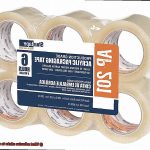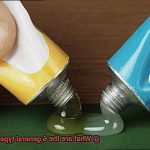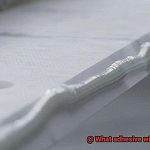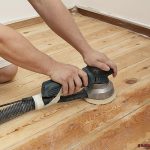Teak wood, oh how it captivates. With its tough-as-nails nature, mesmerizing hues, and grain patterns that could make even the most seasoned craftsman weak at the knees, teak has become the darling of furniture makers, boat enthusiasts, and outdoor aficionados. But here’s the million-dollar question that keeps us all on our toes: is teak difficult to glue?
In the world of woodworking, choosing the right adhesive can mean the difference between a masterpiece and a total flop. Some woods play hard to get when it comes to bonding them together, so understanding how to conquer their stubbornness becomes crucial. Armed with our curiosity and a healthy dose of determination, we’re diving headfirst into the fascinating realm of teak woodworking to uncover just how tricky it is to achieve a solid bond.
Whether you’re an experienced wood whisperer, an enthusiastic DIY junkie, or simply someone who loves a good challenge, join us on this journey as we unveil the secrets behind gluing teak wood. By the end of this article, you’ll be armed with all the know-how you need to tackle projects involving this luxurious timber without getting stuck in any sticky situations. So grab your favorite beverage (iced tea anyone?), get cozy, and let’s unravel the mystery surrounding gluing teak wood.
Challenges of Glueing Teak
Contents
Teak wood is a beloved choice for outdoor furniture and marine applications due to its durability, natural oils, and resistance to moisture. However, gluing teak can be a tricky endeavor due to its unique properties. In this article, we will explore the challenges of gluing teak and provide tips and techniques to help you achieve strong and durable bonds with this magnificent hardwood.
The Battle with Natural Oils:
One of the main challenges in gluing teak is its high concentration of natural oils. These oils create a barrier between the wood and the glue, making it difficult for the adhesive to penetrate and form a robust bond. To overcome this hurdle, it is crucial to prepare the surface properly by cleaning it thoroughly and removing any existing finishes or oils. This can be done using sandpaper or a solvent-based cleaner specifically designed for teak.
Silica Content: A Slippery Situation:
Teak contains a high silica content, which can interfere with glue adhesion. Silica creates a slick surface that makes it challenging for glue to stick effectively. To counteract this issue, choose adhesives that are specifically formulated for hardwoods and have good gap-filling properties. Epoxy adhesives are often recommended due to their ability to bond well with oily woods and provide excellent strength.
Dense and Hard: The Power of Pressure:
The density and hardness of teak wood pose another challenge when it comes to gluing. These characteristics may require additional pressure or clamping force to ensure a secure bond. This can be particularly challenging when working with large or irregularly shaped teak pieces. Using extra clamps or weights during the curing process can help achieve a tight fit and enhance bonding strength.
Movement Matters:
Teak has a tendency to expand and contract with changes in temperature and humidity. This movement puts stress on the glued joints over time, potentially weakening or causing them to fail. When selecting an adhesive, opt for flexible options like polyurethane or rubber-based glues that can accommodate teak’s natural movement. These adhesives offer more elasticity and durability, ensuring that the bond remains intact even with fluctuations in environmental conditions.
The Effects of Oil Content on Gluing
Teak wood, with its rich golden hues and exceptional durability, is a favorite among woodworkers and boat builders alike. But this beautiful hardwood comes with its own set of challenges when it comes to gluing. You see, teak is like a diva in the woodworking world – it’s known for its high oil content, which can make it a real pain to work with. But fear not, my fellow craftsmen, because today I’m going to spill the secrets on how to glue teak wood like a pro.
Now, why is teak so tricky to glue? Well, it all comes down to that oil. The same oil that gives teak its natural resistance to rot and decay also creates a slippery barrier between the glue and the wood surface. And let me tell you, trying to bond with teak when it’s got its oil guard up is like trying to hug a greased-up pig – it’s just not gonna happen.
But don’t throw in the towel just yet. There are ways to conquer this oily beast. Let’s break down the steps you need to take to achieve a solid bond with teak wood:
- Prepare the Surface: Teak requires proper surface preparation before gluing. Grab your trusty sandpaper and give that wood a good sanding. This will not only remove any traces of oil but also create a rough texture for better glue adhesion. Think of it as roughing up the surface so that the glue has something to grab onto.
- Choose Your Glue Wisely: Not all glues are created equal, especially when it comes to oily woods like teak. Look for adhesives specifically designed for hardwoods or oily woods. These magical potions are formulated to penetrate that pesky oil barrier and create a strong bond that will stand the test of time.
- Consider Moisture Content: High moisture levels can further hinder the gluing process, so it’s crucial to ensure that your teak is adequately dried before attempting to glue it. Nobody wants a soggy bond, right?
- Apply Sufficient Clamping Pressure: When it comes to gluing teak, you need to give it some tough love. Apply sufficient pressure during the curing process to ensure that the glued joint remains secure. Think of it as giving teak a big bear hug – you want that bond to be tight and unbreakable.
The Impact of Grain Structure on Gluing
Teak wood, a majestic combination of strength and elegance, presents a tantalizing puzzle for those seeking to master the art of gluing. Its dense and oily composition, intertwined with a mesmerizing grain structure, demands a meticulous approach to achieve a bond that stands the test of time. In this article, we will delve into the impact of grain structure on gluing teak wood, unraveling the secrets needed for success.
A Tapestry of Grain Structure:
Teak wood possesses a captivating grain structure that weaves together porous and dense regions. The dense latewood, enriched with oils and resins, serves as nature’s armor against decay and water damage. However, this very armor creates a formidable challenge for glue penetration and bonding efficacy.
Surface Preparation:
To unlock the potential of gluing teak wood, meticulous surface preparation is paramount. Strip away any previous coatings or finishes using sandpaper or a chemical stripper. Bear in mind that teak harbors natural oils that act as barriers to glue adhesion, necessitating thorough cleansing.
Selecting the Perfect Glue:
The choice of glue wields immense power in determining the triumph of bonding teak wood. Epoxy resin glue reigns supreme due to its unmatched ability to adhere to oily surfaces. Its exceptional strength and imperviousness to moisture make it an ideal candidate for outdoor applications.
Mastering Application Techniques:
The artistry of gluing teak wood lies in the precision of application. Ensuring even coverage is essential; spread the adhesive liberally on both surfaces to be united. Embrace the power of clamps to forge a bond that exudes resilience through consistent pressure applied across the joint.
Embrace the Dance of Grain Orientation:
When merging two pieces of teak wood, the dance of grain orientation becomes a crucial partner in the journey towards strength. Marry pieces with parallel grain orientation for a bond that surpasses expectations, leaving perpendicular unions in its wake.
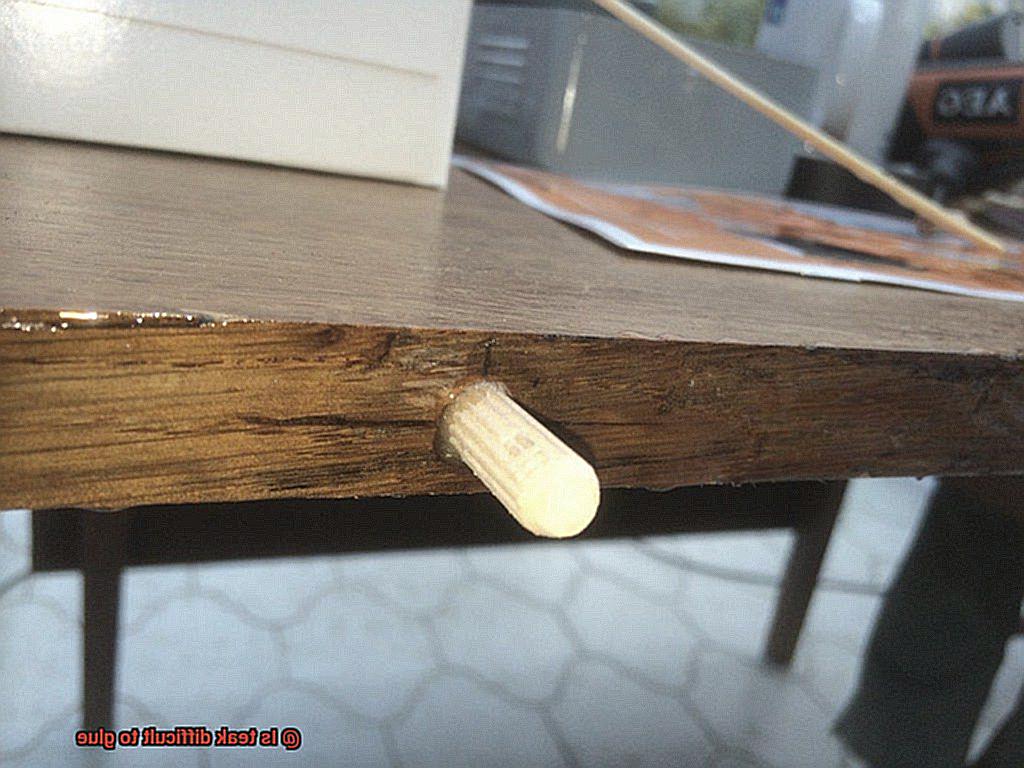
The Symphony of Curing Time:
The oily nature of teak wood may orchestrate a slower symphony of curing for certain glues. To achieve optimal strength, heed the instructions of the manufacturer regarding curing time. Allow ample space for the glue to dry and set, transforming potential into mastery.
The Role of Silica in Gluing Teak
Gluing teak wood may appear deceptively simple, but achieving a bond that withstands the test of time requires careful consideration of various factors. Among these crucial elements lies the magic of silica, an ingredient that plays a pivotal role in the gluing process. In this captivating blog post, we will delve into the role of silica in gluing teak, its unique properties, and how it contributes to creating robust and enduring bonds.
Moisture Absorption:
Teak wood boasts natural oils that can impede adhesive penetration, compromising the bond’s strength. Enter silica—a true hero with a superpower for absorbing moisture. By harnessing silica’s unique ability, the adhesive can penetrate deep within the teak, forging an unyielding bond. With silica as your ally, water-resistant teak no longer poses a challenge.
Filling Imperfections:
Teak surfaces often exhibit gaps or imperfections that can weaken the bond. Here’s where silica steps in as a masterful filler material, deftly bridging these crevices to create an impeccably smooth surface for the adhesive to grip. In doing so, silica fortifies the connection between teak pieces, guaranteeing strength and durability.
Enhanced Strength:
Silica’s contribution extends beyond filling gaps; it bolsters the overall strength of the glue joint. By increasing adhesive viscosity, silica transforms it into a formidable shield against shear forces. Even under intense pressure or stress, the bond between teak pieces remains unbreakable. Silica acts as a steadfast reinforcement agent, ensuring your glued teak projects withstand the trials of time.
Choosing the Right Glue:
While silica is instrumental in gluing teak, selecting a compatible adhesive glue is equally vital. Different glues possess distinct properties and work best with specific materials. Hence, it is imperative to choose an adhesive glue that synergizes with silica and teak wood, harmoniously combining their powers to achieve optimal results.
Compatible Adhesives for Teak Wood Projects
Teak wood is renowned for its durability, resistance to decay, and natural oils, making it a popular choice for woodworking projects. However, gluing teak wood can be a challenge due to its high oil content. In this blog post, we will explore the compatible adhesives that work wonders with teak wood. Discover the secret ingredient that unlocks unbreakable bonds – silica.
Epoxy Adhesives: The Superheroes of Teak Wood Bonding
When it comes to bonding teak wood, epoxy adhesives are the ultimate superheroes. Combining a resin and hardener, these adhesives create an unbeatable bond. What sets them apart is their compatibility with oily surfaces, including teak wood. The secret lies in the silica fillers present in most epoxy formulations. Silica not only absorbs moisture but also fills imperfections, resulting in enhanced strength and durability.
Polyurethane Glue: Reliable and Versatile
Polyurethane glue is another reliable option for teak wood projects. Its exceptional bonding strength and versatility make it a go-to adhesive. This adhesive forms a powerful bond with teak wood and expands during curing, effortlessly filling gaps or voids in joints. The inclusion of silica in polyurethane glue further enhances its remarkable bonding capabilities. Remember to apply even pressure during curing and promptly remove any excess glue.
Specially Formulated Cyanoacrylate Adhesives: Unlocking the Potential of Super Glue
For those seeking the ease and speed of super glue, specially formulated cyanoacrylate adhesives offer a solution for bonding teak wood. Look for adhesives specifically designed for oily surfaces to tackle the oil content of teak wood successfully. These formulations contain silica, enabling them to form strong bonds with oily woods like teak. Follow the manufacturer’s instructions for surface preparation and curing time to achieve optimal results.
How to Prepare the Surface Before Applying Adhesive
Teak wood is prized for its durability and resistance to moisture, making it a popular choice for many woodworking projects. However, when it comes to gluing teak, proper surface preparation is key to achieving a strong and long-lasting bond. In this article, we will explore the essential steps you need to take to prepare teak before applying adhesive. By following these steps, you can ensure that your adhesive bonds effectively and securely to the teak surface.
Step 1: Thoroughly Clean the Surface
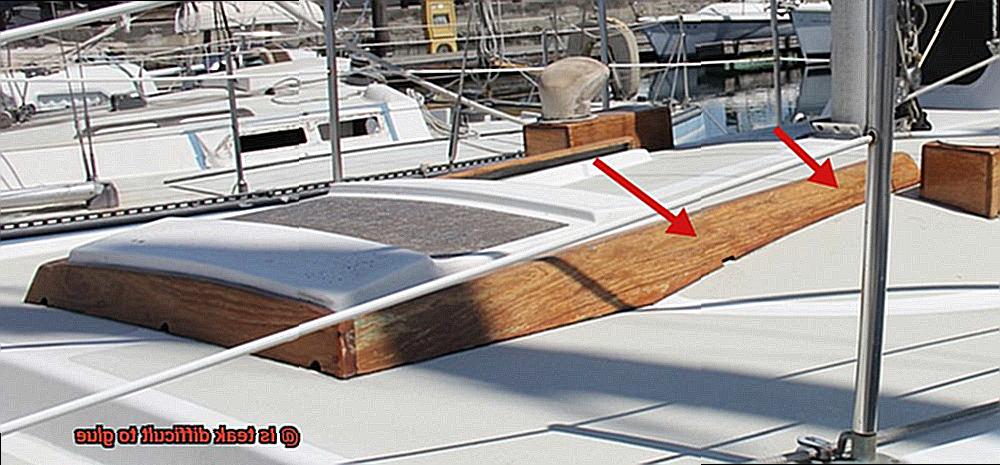
Before applying adhesive, it is crucial to clean the teak surface thoroughly. Any dust, dirt, or debris on the surface can hinder the bonding process and compromise the adhesive’s effectiveness. Use a soft brush or cloth to remove any loose particles from the wood. For stubborn stains or marks, a mixture of mild detergent and water can be used to gently scrub the surface. Rinse off any soap residue and allow the teak to dry completely before proceeding.
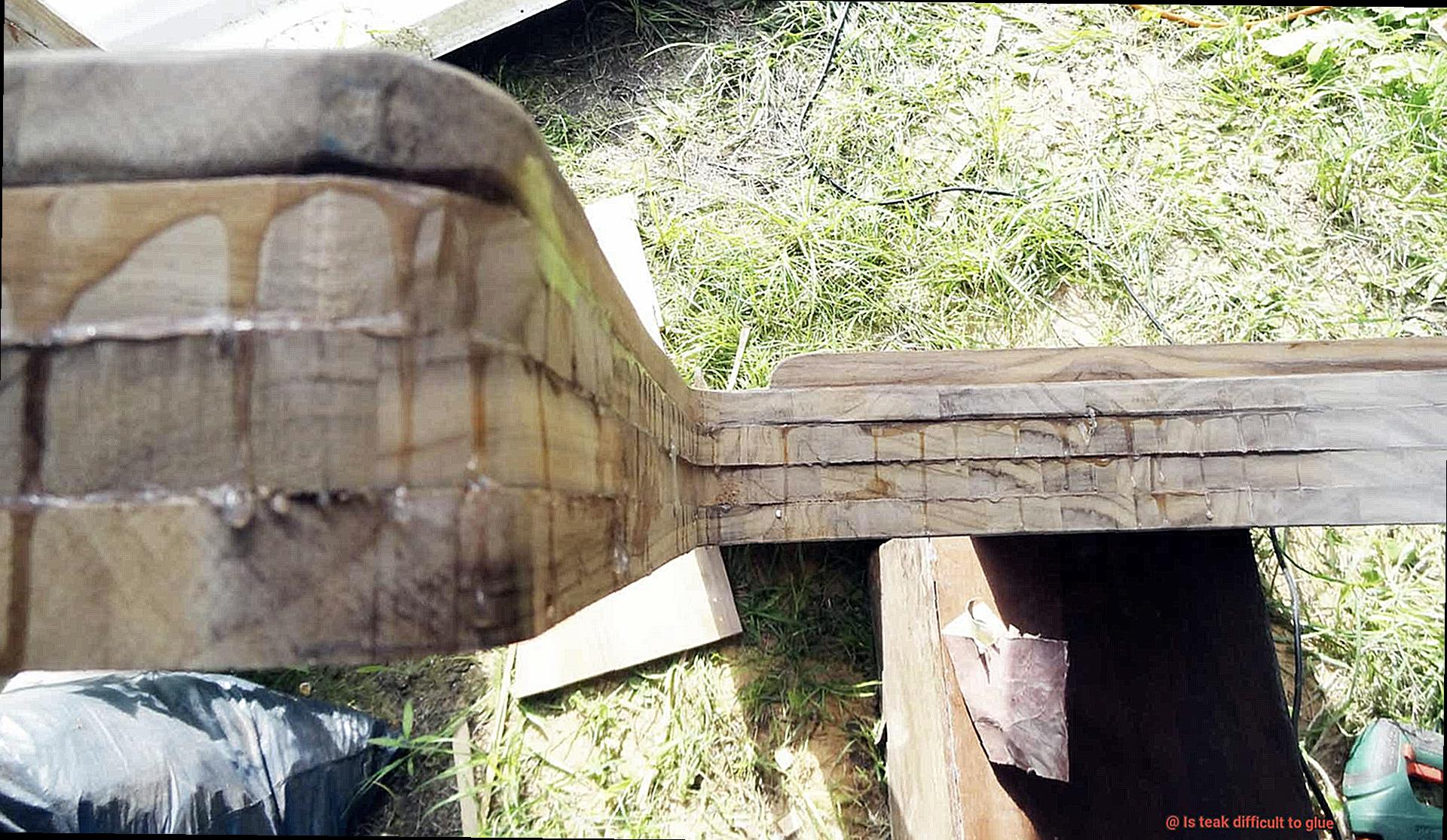
Step 2: Achieve a Smooth Texture with Light Sanding
To enhance the adhesive’s grip on the teak surface, lightly sand the wood to create a slightly roughened texture. Use fine-grit sandpaper and sand in the direction of the grain. Avoid applying too much pressure or oversanding, as this can damage the wood. The goal is to create a smooth surface with increased adhesion, not to remove layers of wood.
Step 3: Remove Sanding Dust
After sanding, it is crucial to remove any sanding dust from the teak surface. Even small amounts of dust can compromise the adhesive’s performance. Use a vacuum cleaner or a clean cloth to thoroughly remove all dust particles from the surface. Pay extra attention to crevices and corners where dust may accumulate.
Step 4: Consider Priming for Enhanced Adhesion
Applying a primer before adhesive application can help seal the teak wood and improve adhesion by creating a barrier between the wood and the adhesive. Choose a primer specifically designed for teak wood and compatible with your chosen adhesive type. Follow the manufacturer’s instructions for application and allow sufficient drying time before proceeding.
Step 5: Check Temperature Requirements
Before applying adhesive, ensure that both the teak surface and the adhesive are at the correct temperature. Different adhesives have specific temperature requirements for optimal bonding. Deviating from these temperature ranges can affect the adhesive’s ability to bond effectively. Consult the adhesive manufacturer’s instructions and make sure to maintain the recommended temperature range during application.
Tips for Achieving a Tight Fit Between Pieces
Achieving a tight fit between teak pieces when gluing can be quite challenging due to the wood’s dense and oily nature. However, with the right tips and techniques, a strong and durable bond can be achieved.
To begin, it is essential to thoroughly prepare the surfaces before applying any adhesive. Teak’s natural oils can create a barrier that hinders proper adhesion. Therefore, it is crucial to clean the surfaces, ensuring they are free from dirt, dust, and contaminants. Lightly sanding the surfaces can help remove any existing finish or oils that may interfere with the bonding process.
Choosing the appropriate adhesive is also critical for achieving a tight fit with teak. Traditional wood glues may not be effective due to teak’s oily nature. It is recommended to use adhesives specifically formulated for oily woods, such as epoxy or polyurethane glue. These adhesives have superior penetration and bonding capabilities, resulting in a stronger and more reliable bond.
Applying even pressure during the gluing process is another key factor in achieving a tight fit between teak pieces. This helps eliminate gaps or voids between the pieces and ensures a solid bond. Using clamps or other suitable methods to hold the pieces together firmly while the glue dries is highly recommended.
Allowing sufficient drying time is crucial when working with teak. The wood’s natural oils can slow down the drying process of some adhesives. Patience is necessary to ensure the glue fully cures as per the manufacturer’s instructions before subjecting the glued pieces to any stress or load.
In some cases, achieving a tight fit solely through gluing may be difficult. In such situations, reinforcement techniques like dowels, biscuits, or splines can be employed. These reinforcements provide added strength and stability to the joint and can be inserted into pre-drilled holes or slots in the teak pieces before applying adhesive.
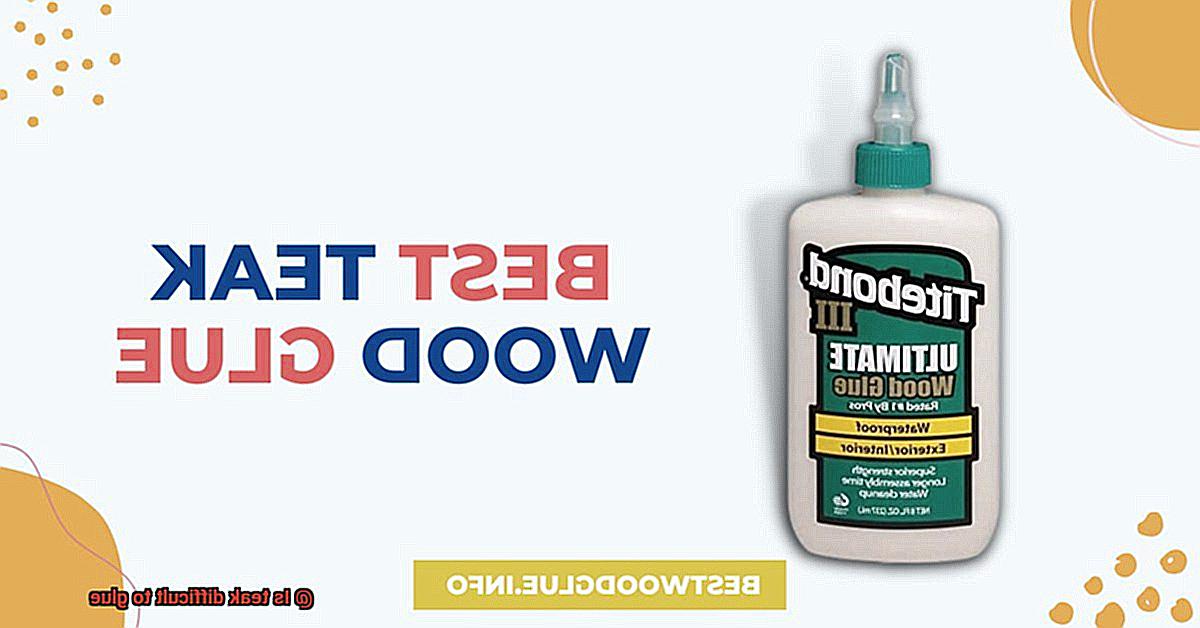
6QFFUn7BIwA” >
Conclusion
In conclusion, gluing teak wood can pose a formidable challenge due to its unique properties. The abundance of natural oils in teak forms a formidable barrier against glue, hindering its ability to penetrate and form a robust bond. Moreover, the high silica content in teak creates a slick surface that makes it arduous for glue to adhere effectively.
Nevertheless, with meticulous preparation and the right techniques, attaining a solid bond with teak becomes an achievable feat. It is imperative to meticulously cleanse the surface and eradicate any existing finishes or oils before applying adhesive. A gentle sanding of the surface imparts a rough texture that enhances glue adhesion.
The choice of adhesive also plays a pivotal role. Epoxy adhesives are often lauded for their prowess in bonding with oily woods like teak. Polyurethane glues and specially formulated cyanoacrylate adhesives can also prove effective options.
During the curing process, applying adequate clamping pressure ensures a snug fit between teak pieces. This may necessitate additional clamps or weights, particularly when working with large or irregularly shaped pieces.
Lastly, it is crucial to consider teak’s propensity to expand and contract with fluctuations in temperature and humidity when selecting an adhesive. Opting for flexible alternatives such as polyurethane or rubber-based glues allows for accommodating teak’s natural movement without compromising the bond.
By adhering to these invaluable tips and employing proven techniques, you can surmount the challenges associated with gluing teak and achieve resolute bonds in your woodworking endeavors.


